CLOUDS SEEDED BY METEOROIDS...
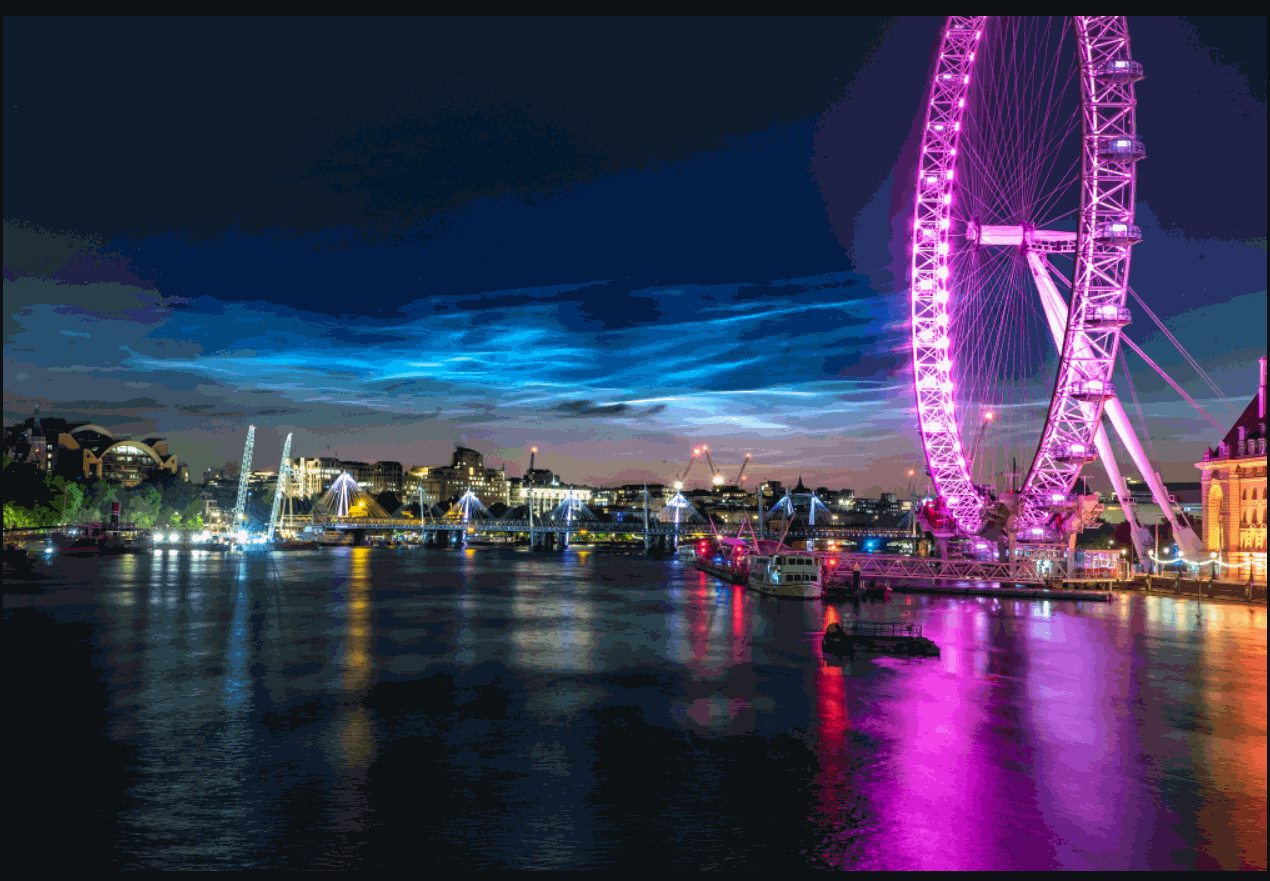
Noctilucent clouds over London taken by Phil Halpert June 2020
METEOR CREATED CLOUDS IN THE MESOSPHERE
In the summer of 1885, sky watchers around northern Europe noticed something strange. Sunsets weren't the same anymore. The red and orange colors people were used to seeing were still there, but those familiar colors were increasingly joined by rippling waves of luminous blue.
At first they chalked it up to Krakatoa which had erupted two years earlier. The explosion of the Indonesian super volcano hurled massive plumes of ash and dust into the atmosphere more than 50 miles high, coloring sunsets for years after the blast.
Eventually Krakatoa's ash settled, yet the rippling waves of luminous blue didn't go away as expected. Indeed, more than 100 years later, they are shining brighter than ever.
Today we call them, "noctilucent clouds" (NLCs). They appear with regularity in summer months, shining against the starry sky at the edge of twilight. Back in the 19th century you had to go to the Arctic latitudes to see them. In recent years, however, they have been sighted from backyards as far south as Kansas and Minnesota.
The above few paragraphs are excerpts from a 2016 article by Dr. Tony Phillips, a regular contributor to Spaceweather.com and an expert on noctilucent clouds. He was recently interviewed about what the impacts might be from what is likely to be a record number of sunspotless days in what's known as cycle 25. One of the things he mentioned was noctilucent clouds being brighter and found further south in latitude.

This excerpt from from an article June 9, 2020 explains why: It’s getting cold in the mesosphere. Very cold. “At polar latitudes (60N-80N) temperatures have been breaking 14-year records in the last few days,” reports Lynn Harvey of the University of Colorado Laboratory for Atmospheric and Space Physics. This development is causing noctilucent clouds (NLCs) to spill out of the Arctic to middle latitudes.
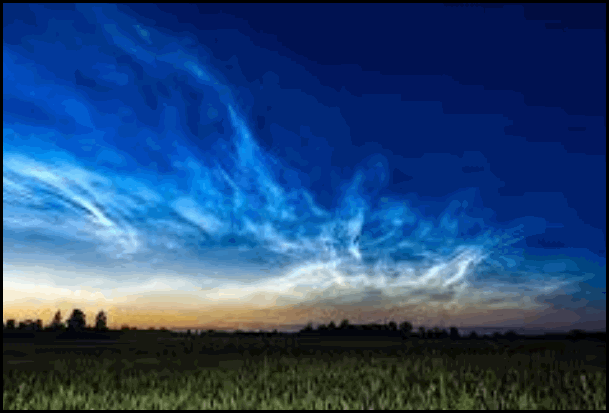
NLCs are Earths highest clouds. Seeded by meteoroids, they float at the edge of space 83km above the ground. The clouds form when summertime wisps of water vapor rise up to the mesosphere allowing water to crystallize around specks of meteor smoke. Usually they are best seen after the summer solstice, but this year they are getting an early start.
What's happening? To find out, Harvey has been looking at data from NASA's Microwave Limb Sounder (MLS), which can sense conditions 83 km high where NLCs form. "These plots show that 2020 is shaping up to be a cold and wet year in the mesosphere," she says.
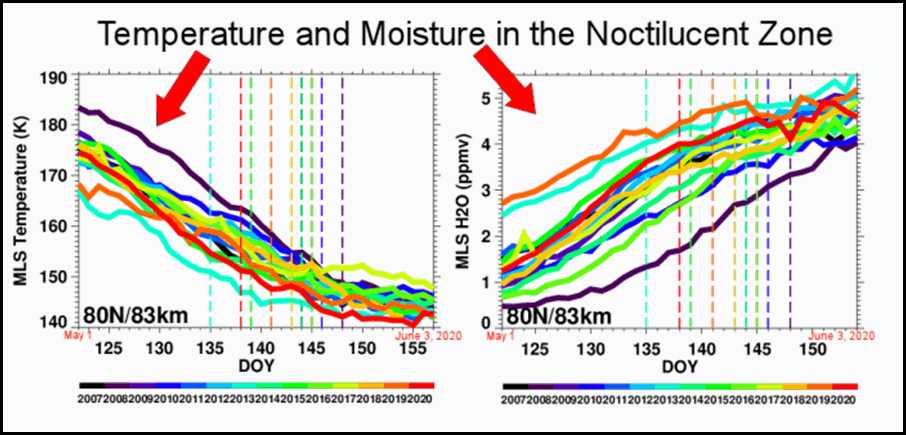
"Temperatures, in particular, are very cold", she says, "In fact, mid-latitude temperatures (35N-55N) in late May were the coldest of the AIM record"-that is, since 2007 when NASA's AIM spacecraft began monitoring noctilucent clouds.
Last summer, NLCs spread as far south as Los Angeles and Las Vegas, setting records for low-latitude sighting. The growing chill today suggests this summer could be just as good, or maybe even better. In fact, the first sightings in the continental USA (Washington and Minnesota) have already happened.
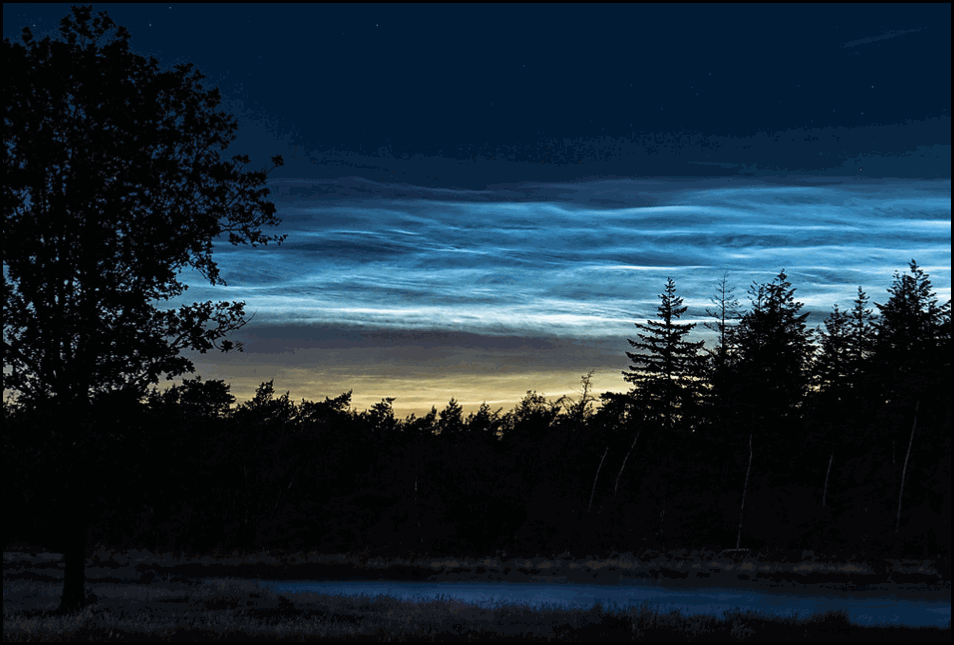
Observing Tips: The best time to look is during the hours after sunset (or before sunrise) when the sun is more than 6 degrees below the horizon. If you see electric-blue tendrils spreading across the sky, chances are good you have spotted a noctilucent cloud!
With regards to more traditional weather, the positive is most of my area missed out on any significant severe storms Friday afternoon and evening. The outflow from earlier storms and the timing of the front kept the majority of the evening storms in my far southern counties. Here's what they looked like on the satellite image mid-evening as they were coming together..
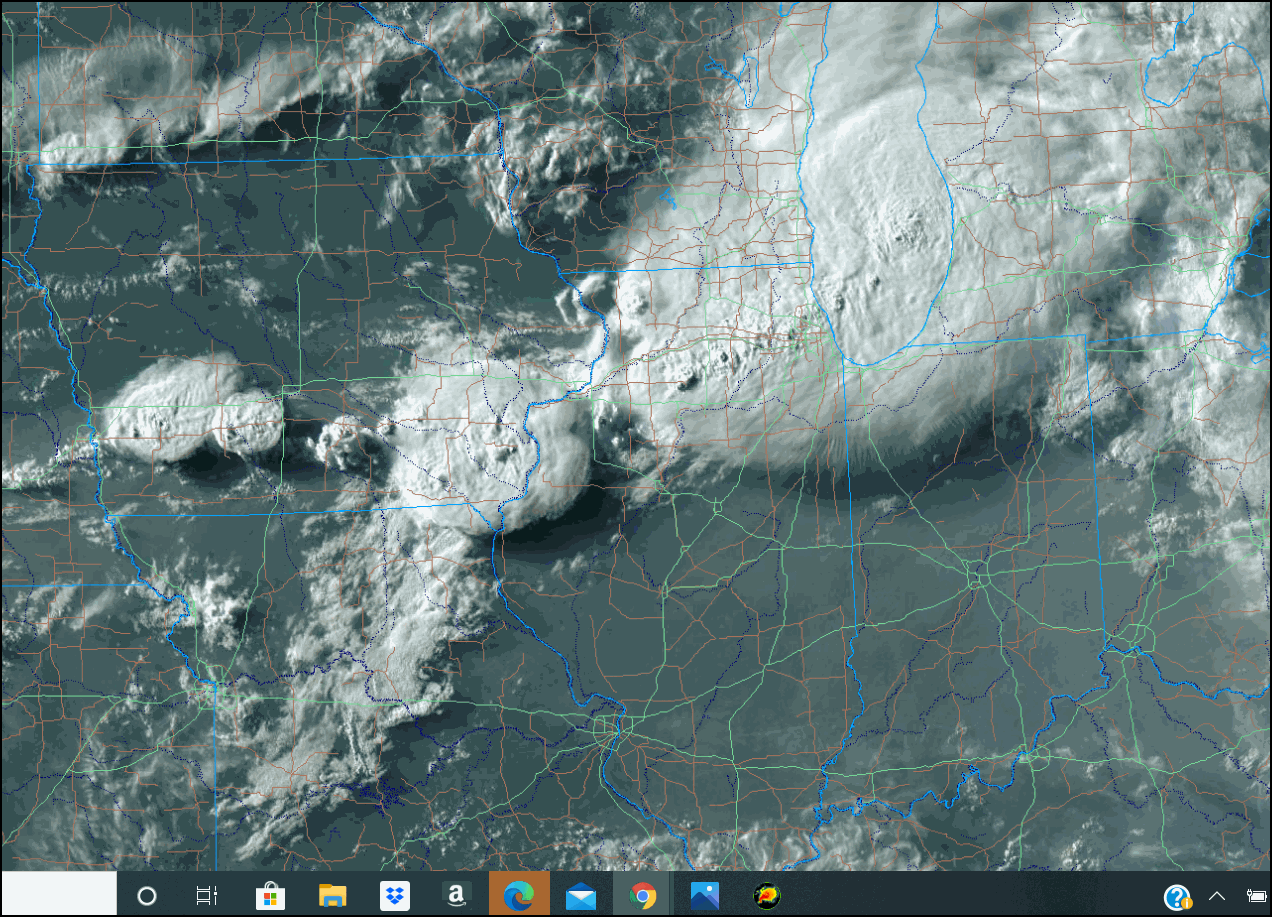
The line is filling in rapidly south of I-80 at the same time of the satellite imagery.
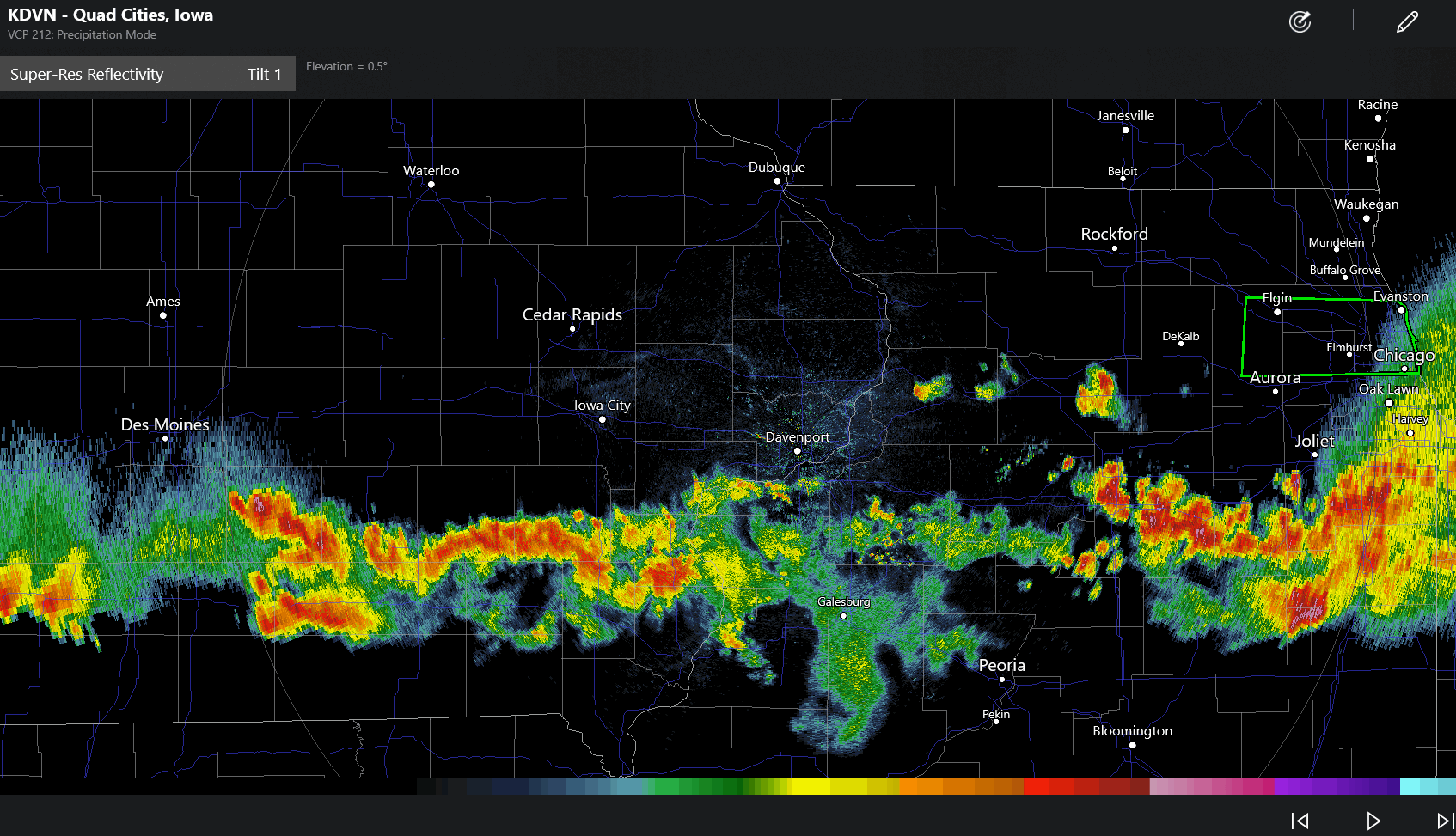
Heavy rain was experienced but as you can see in the Doppler estimates, the central parts of my area were spared with the the late day development so far south. That's a well deserved break for that part of my area!

Well, I guess I'll leave it at that on a Friday night. Who would have thought, smoke from meteors creating clouds. What a world. Enjoy your weekend and roll weather...TS










